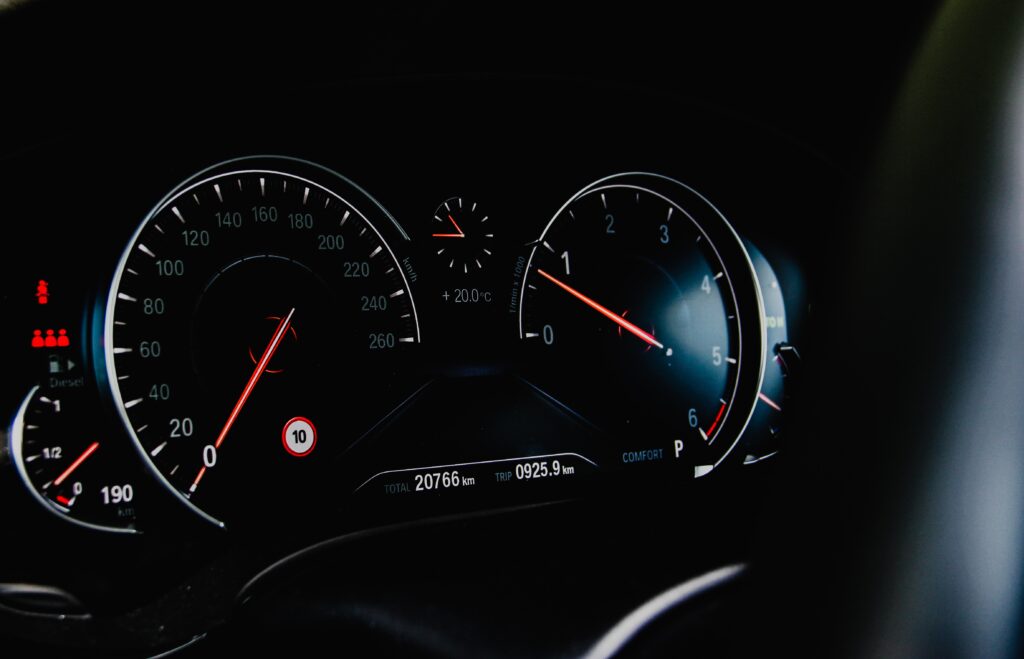If you’ve ever found yourself stranded on the side of the road with a flat tire, then you’ll understand the frustration of having a portable tire compressor that just won’t do its job. It can be incredibly frustrating to have all the necessary tools at hand, only to find that your tire remains stubbornly deflated. But fear not, because in this article, we’ll walk you through some simple troubleshooting steps to get your tire inflated in no time. So, grab your portable tire compressor and let’s get to work!

Understanding the Problem
Identifying the problem
When you find that your portable tire compressor isn’t inflating the tire, it is important to identify the root cause of the issue. This will help you determine the steps needed to fix the problem and get your tire inflated properly.
Understanding the implications of a malfunctioning compressor
A malfunctioning compressor can have several implications. Firstly, it can leave you with a flat or underinflated tire, which can be dangerous and impact your vehicle’s performance. Secondly, it can result in the compressor not working when you need it the most, such as during an emergency situation. Lastly, running a malfunctioning compressor for an extended period of time can potentially cause further damage and decrease its lifespan.
Recognizing symptoms of tire compressor issues
There are a few telltale signs that can indicate problems with your tire compressor. One common symptom is the compressor not turning on or not producing any air pressure. Additionally, if the compressor is running but not inflating the tire adequately, or if it is making unusual noises during operation, these are also signs that there may be underlying issues with the compressor.
Inspecting the Compressor
Checking for physical damage
Before proceeding with troubleshooting the compressor further, it is vital to conduct a visual inspection for any physical damage. Look for cracks, dents, or any signs of wear and tear on the compressor body. Physical damage can affect the functioning of the compressor and may require repairs or replacement.
Looking for possible leaks
Leakages can significantly impact the performance of a compressor. Inspect the compressor’s hoses, fittings, and valves for any signs of leakage, such as visible cracks, loose connections, or hissing sounds when the compressor is running. Identifying and fixing leaks promptly will ensure that the compressor can operate effectively.
Inspecting the power source
In many cases, issues with the compressor can be traced back to the power source. Check the power cord for any visible damage, such as frayed wires or loose connections. Ensure that the power outlet you are using is functioning properly and providing consistent power to the compressor. For cordless compressors, make sure the battery is adequately charged and in good condition.
Assessing the compressor’s performance
To accurately diagnose the issue with your portable tire compressor, it is crucial to assess its overall performance. Pay attention to factors such as the pressure gauge reading and the time it takes for the compressor to inflate a tire. Compare these measurements to the compressor’s specifications to determine if it is operating within normal parameters.

Safety Measures Before Troubleshooting
Unplugging the compressor from power source
Before beginning any troubleshooting steps, always ensure that the compressor is safely disconnected from its power source. This will prevent any accidental electrocution or damage to the compressor during the diagnostic process.
Wearing protective equipment
When inspecting or troubleshooting the compressor, it is advisable to wear appropriate protective equipment. Safety glasses, gloves, and closed-toe shoes can provide protection against any potential hazards or accidents that might occur.
Clearing the work area
Before starting any troubleshooting procedures, make sure to clear the work area of any potential obstructions or hazards. Move away any loose objects, ensure good lighting, and provide ample space for safe and efficient troubleshooting.
Investigating Power Issues
Checking the power cord
If you suspect that the compressor’s power source is causing the issue, carefully inspect the power cord. Look for any visible damage to the cord, such as fraying or exposed wires. Ensure that the power cord is securely connected to both the compressor and the power outlet. If you find any damage, it is recommended to replace the cord before further use.
Testing the power outlet
To determine if the power outlet is the culprit, try using it with another device to verify if it is providing consistent power. If the power outlet is not functioning correctly, consider using a different outlet or contacting an electrician to fix the problem.
Considering battery issues in cordless compressor
For cordless compressors, the battery plays a crucial role in the operation. Check the battery’s charge level and make sure it is fully charged. If the battery is old or not holding a charge effectively, consider replacing it with a new one to ensure optimal performance.

Diagnosing Air Hose Issues
Checking for air leaks
Air leaks in the hoses can significantly impact the compressor’s performance. Carefully inspect the hoses for any visible cracks, holes, or loose connections. Additionally, listen for any hissing sounds that might indicate a leak when the compressor is running. If you find any leaks, repair or replace the hoses as necessary.
Assessing the hose connection
Ensure that the hose is securely connected to both the compressor and the tire valve stem. Check for any signs of loose connections or damage to the hose fittings. If necessary, tighten the connections or replace the fittings to ensure a proper seal.
Inspecting the condition of the air hose
Inspect the overall condition of the air hose, looking for signs of wear and tear, such as fraying or splitting. A damaged hose can lead to reduced airflow or leakage, hindering the compressor’s ability to inflate the tire effectively. If the hose is damaged, replace it with a new one to prevent further issues.
Analyzing Compressor Motor Issues
Testing the motor functionality
The motor is a critical component of the portable tire compressor. If you suspect motor issues, test its functionality by turning on the compressor and listening for any unusual noises or vibrations. Additionally, observe if the motor is running smoothly or if it seems to be struggling. If the motor is not functioning properly, it may need repairs or replacement.
Listening for unusual motor noises
While the compressor is running, pay close attention to any unusual or excessive noises coming from the motor. Grinding, screeching, or rattling sounds can indicate underlying motor problems. If you notice any of these noises, it is advisable to seek professional assistance to avoid further damage to the compressor.
Considering age and usage factors
The age and frequency of use can also impact the performance of the compressor’s motor. Over time, motors may wear out or become less efficient. If your compressor is older or has been heavily used, it may be more prone to motor issues. In such cases, replacing the motor or the entire compressor might be necessary.
Evaluating Tire Valve Stem
Checking for damage on valve stem
Inspect the tire’s valve stem for any visible damage, such as cracks or bends. Damage to the valve stem can prevent a proper seal, leading to air leakage and inefficient tire inflation. If you notice any damage, consider replacing the valve stem to ensure optimal performance.
Testing for leaks in valve stem
To check for leaks in the tire’s valve stem, apply a soapy water solution to the valve and observe for any bubbles forming. Bubbles indicate air leakage and may suggest a faulty valve stem. In this case, replacing the valve stem is recommended to prevent further issues.
Assessing the need for valve stem replacement
If the valve stem is old, worn, or has a history of issues, it may be necessary to replace it. Valve stems can deteriorate over time, leading to air leakage and compromised tire inflation. Regularly inspecting and replacing valve stems as needed will help maintain proper tire pressure and prolong the life of your compressor.
Preventing Future Compressor Problems
Maintaining the portable tire compressor properly
To avoid future problems with your compressor, it is important to maintain it properly. Keep the compressor clean and free from debris, regularly lubricate moving parts if necessary, and store it in a dry and safe location. Following the manufacturer’s maintenance guidelines will help extend the lifespan of your compressor.
Regularly inspecting and replacing worn-out parts
Regular inspections of your compressor’s components are crucial for early detection of any potential issues. Check for signs of wear and tear, such as cracked hoses, loose connections, or damaged power cords. Replace any worn-out parts promptly to prevent further problems with your compressor’s performance.
Using the compressor within manufacturer’s guidelines
Finally, it is essential to use your compressor within the guidelines provided by the manufacturer. Overloading the compressor or using it for purposes it is not intended for can lead to premature wear and potential malfunctions. Adhering to the manufacturer’s instructions will ensure safe and effective use of your portable tire compressor.
By following these steps and taking the necessary precautions, you can effectively troubleshoot and resolve issues with your portable tire compressor. Remember to always prioritize safety and consult a professional if you are unsure or unable to resolve the problem on your own.
